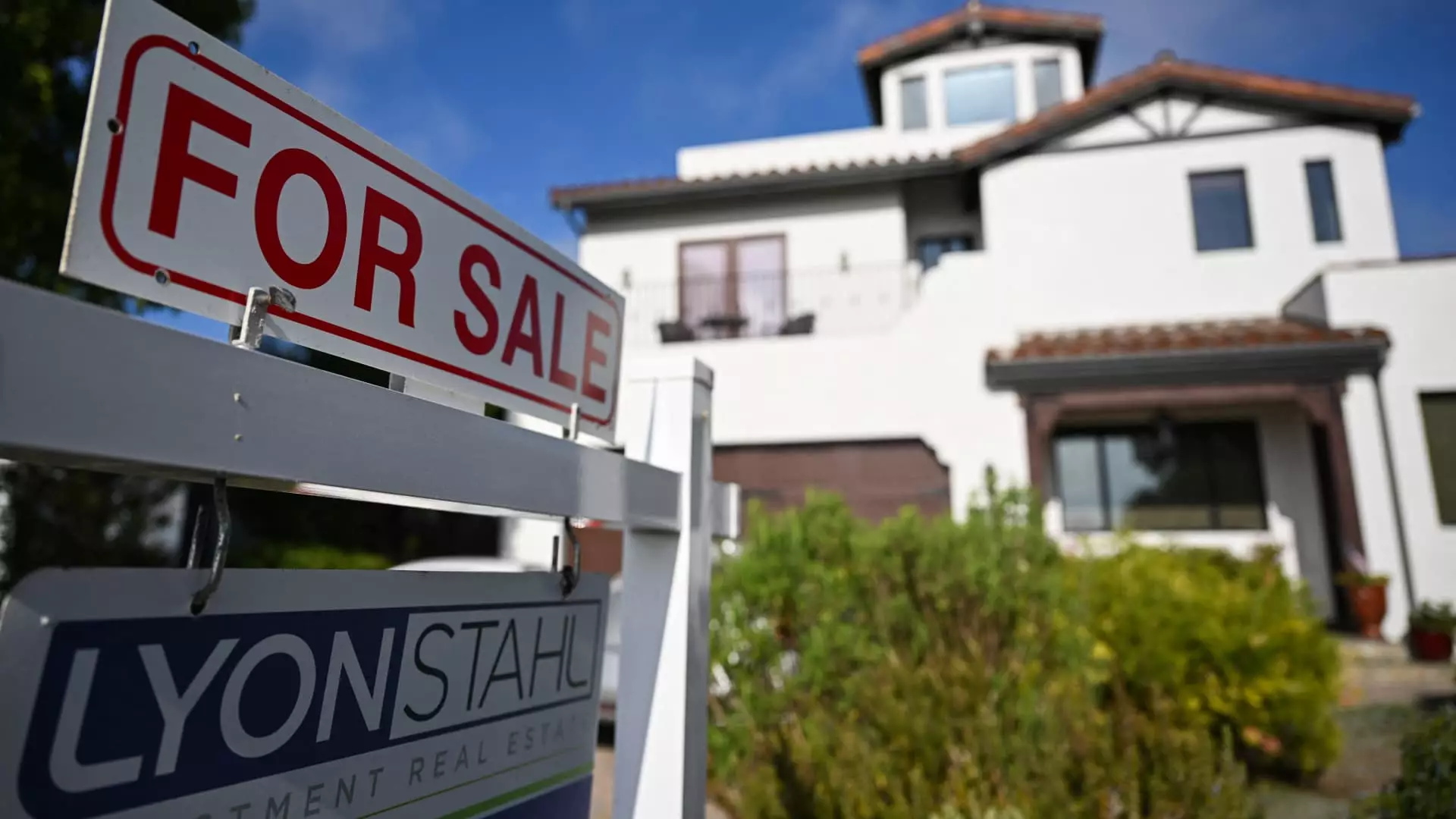In a surprising turn of events, mortgage rates took a steep dive this past Thursday following the Trump administration’s latest tariff disclosure. The average rate for the 30-year fixed mortgage plummeted by 12 basis points, landing at a compelling 6.63%, the lowest it has been since October. This fluctuation was primarily driven by a tumultuous stock market that sent investors scrambling for the safety of bonds, leading to the consequential drop in bond yields. The connection between mortgage rates and the yield on the 10-year U.S. Treasury was clearly demonstrated, as rates had been coiling within a constrained range since late February. Matthew Graham, COO of Mortgage News Daily, notes that uncertainty prevails over the specifics of the tariff announcements, heightening market anxiety regarding global trade.
This remarkable shift arrives at a precarious moment for the housing market, particularly as we enter the robust spring season traditionally ripe for real estate activity. While lower mortgage rates typically signal good news, a deeper analysis reveals a complex landscape fraught with obstacles for prospective buyers.
Record High Payments Amidst Lower Rates
Despite a decrease in mortgage rates, reality strikes hard for would-be homeowners, as affordability remains a substantial hurdle. For the four-week period ending March 30, Redfin recorded an alarming surge in the typical U.S. homebuyer’s monthly payment, which reached an unprecedented $2,802—marking a record for the second consecutive week. Home sale prices continue to escalate, rising by 3.4% year-over-year, with mortgage rates lingering around 6.65%. Although these rates are among the lowest we’ve seen since December, they still hover more than double the lows recorded during the pandemic.
The unfortunate truth is that nearly 70% of American households—approximately 94 million—cannot afford a $400,000 home, a stark reality highlighted by the National Association of Home Builders. Projections suggest that by 2025, the median price for a new home could balloon to around $460,000, a true crisis moment for millennials and first-time buyers who are already struggling under prevailing economic conditions.
The Real Income Divide
Examining income requirements reveals further disheartening statistics. To purchase a $200,000 home with a prevailing mortgage rate of 6.5%, a household needs a minimum income of $61,487. Alarmingly, it is estimated that in 2025, approximately 52.87 million American households will be situated at or below that income threshold, limiting their purchasing power to homes priced around $200,000. This growing chasm between housing prices and household income raises critical questions about economic equity and long-term affordability within the housing market.
While some investors are optimistic about the emergence of new listings, the market fails to cater to the lower-income demographic where demand is highest. The surge of new homes failing to reflect this price point reveals a price disparity that further exacerbates homeownership challenges, particularly for those entering the market for the first time.
Shifting Market Dynamics: New Listings vs. Buyer Reticence
The spring of 2025 has yielded a notable increase in new listings—an impressive 10% annual jump for March—along with a 28% rise in active listings compared to the previous year, according to Realtor.com. However, buyers remain timid, with homes lagging on the market for extended periods and a noticeable rise in the share of listings undergoing price reductions. The statistics indicate a complex scenario where pending sales—signed contracts for existing homes—dipped by 5.2% year-over-year among major metropolitan areas, with sharp declines observed in places like Jacksonville and Miami, where the real estate market is softening, largely due to reverse pandemic migration trends.
This seemingly benign uptick in listings paradoxically illustrates buyer hesitance and the sobering reality of a market that is scrambling to recalibrate itself. As Danielle Hale, chief economist for Realtor.com, notes, economic anxiety combined with elevated purchasing costs has sparked a sluggish response from buyers this early in spring.
While quantitative metrics such as falling mortgage rates and rising new listings might paint a rosy picture, the underlying sentiment remains fraught with tension—unmet demand for affordable housing combined with skyrocketing prices cultivates a landscape that leaves many feeling immobilized. In such tumultuous times, it is essential to interrogate the assumptions holding back our understanding of this complex housing market.

